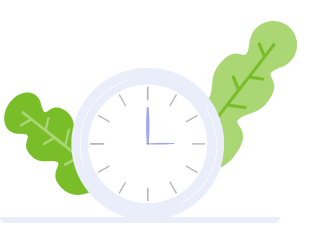If you switch to a cheaper material for your units or find ways to complete the same tasks with fewer labor hours, you’ll also save. These are all valid ways to cut fixed vs variable costs variable costs and increase your profit margins. A fixed cost is any business expense that remains the same, regardless of how many units your business produces, how many sales it makes, or how much revenue it generates.
- For example, let’s say you have total fixed costs of $50,000 per month.
- As a result, decision-makers need to carefully consider fixed costs when evaluating the feasibility of new projects or investments.
- When you’re producing fewer units, your variable expenses decrease.
- Saving for a house, paying off debt, or building an emergency fund all require planning.
- They are directly affected by the fluctuations in the activity levels of the enterprise.
- Fixed costs are one that does not change with the change in activity level in the short run.
Using Financial Data to Analyze Cost Structures

If the relevant range is fairly wide, accountants may refer to the increasing cost as a “step-fixed” cost. If the relevant range is fairly narrow, it could be called a “step-variable” cost (see video below). In any case, like mixed costs, a step cost is a variation of the basic behavior categories of fixed or variable. It has no impact on profit because as the production increases so as the variable cost.

Examples of Variable Costs
- A common fixed cost situation for a business is a building that must be heated and air conditioned, even if no one is currently occupying it.
- Falling under the category of cost of goods sold (COGS), your total variable cost is the amount of money you spend to produce and sell your products or services.
- The lower your total variable cost, the less it costs you to provide your product or service.
- In this way, a company may achieve economies of scale by increasing production and lowering costs.
- Examples of variable costs include raw materials, direct labor, packaging, and sales commissions.
- This relationship highlights the importance of managing variable costs effectively to achieve cost savings and enhance competitiveness.
- Break-even analysis can also provide information about projected profits for those considering buying a business.
Some of these remain static regardless of output, while others will fluctuate. Understanding the differences between fixed and variable costs will allow businesses to better manage online bookkeeping their operations, margins, and overall strategy. A company’s net profit is affected by changes in sales volumes. That’s because as the number of sales increases, so too does the variable costs it incurs.

Fixed Costs vs Variable Costs: An Overview
Suppose the bakery took a loan to buy an industrial oven, with monthly repayments of $1,500. These payments remain constant whether the oven is used for 100 hours Grocery Store Accounting or sits idle. This means you need to sell at least 1,364 cupcakes monthly to cover your costs.
- A small buffer makes sure the budget stays balanced even when expenses aren’t the same every month.
- Workers are expected to produce up to 25 journals per hour, so the hourly rate is respectable if the student works steadily.
- This might mean refinancing a loan, switching to a cheaper insurance plan, or canceling unused subscriptions.
- For instance, the bakery’s manager earns $4,000 every month, whether it’s peak wedding season or a slow winter month.
- Understanding the difference between fixed and variable costs is fundamental for effective financial management and strategic planning.
- Semi-variable costs tend to have a fixed component up to a certain production level, with a variable element kicking in as production surpasses that threshold.
- Both fixed and variable expenses need to be accounted for to provide a complete picture of your business’s overall financial health and profitability.
Since we categorize costs as either fixed or variable, the combination of the two gives us total costs for various levels of production. Now let’s compare these two types of cost together with the help of an example. Assume Smart Décor is a furniture manufacturing company and it cost $220 to produce one dining table.

For instance, if a company experiences a surge in demand for its products, it may need to increase its raw material purchases and hire additional workers, resulting in higher variable costs. On the other hand, if demand decreases, the company can reduce its production and labor requirements, leading to lower variable costs. Fixed costs are also considered sunk costs, meaning they cannot be easily recovered or changed in the short term. As a result, decision-makers need to carefully consider fixed costs when evaluating the feasibility of new projects or investments. While fixed costs may not directly impact the cost per unit, they significantly affect the breakeven point and profitability of a business. For example, if you invest in more energy-efficient machinery, it will eventually pay for itself and save you money by lowering your utility bills.
0 comentários